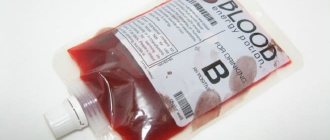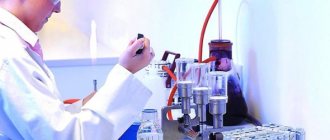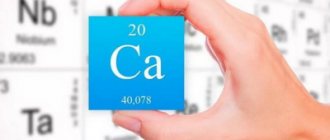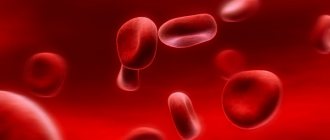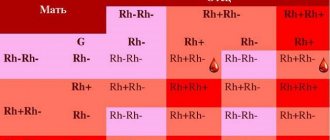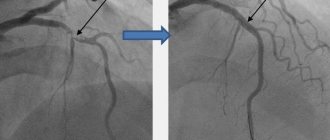In modern medicine, a blood group characterizes a set of antigens located on the surface of red blood cells, which determine their specificity.
There are a huge number of such antigens (usually a table of blood groups with various antigens is used), but blood group determination is carried out everywhere using the classification according to the Rh factor and the AB0 system.
Determining a group is a mandatory procedure when preparing for any operation. Such an analysis is also necessary when entering service in certain contingents, including the military, employees of internal affairs bodies and law enforcement agencies. This event is carried out due to the increased risk of a life-threatening condition in order to reduce the time required to provide assistance in the form of blood transfusion.
Technique for determining the AB0 blood group using standard sera
Indications: need for blood transfusion, preparation for surgery.
Prepare: a standard plate with indentations; a set of glass rods; isotonic sodium chloride solution; a set of hemagglutinating sera of groups 1, 2, 3, 4 of two series; pipettes; blood taken from a vein or finger; watch; trays; gloves; containers for waste material; containers with disinfectant solutions.
Preparation for manipulation:
- The nurse is fully prepared to perform the procedure: dressed in a suit (gown), mask, gloves, cap, and replacement shoes.
- Check the quality of standard hemagglutinating serums by: color marking, appearance (light, transparent); the safety of the packaging, the presence of a correctly designed label.
- Prepare everything necessary to perform the manipulation.
Performing the manipulation:
— on a white plate, according to the designation, sequentially apply one drop of serum from groups 1, 2, 3 of two series. Immediately lower each pipette into the same ampoule (vial) from which they were taken;
- Using a glass rod, apply a drop of the blood being tested next to the indentations (6 indentations). A drop of blood should be 10 times smaller than a drop of serum;
- note the time and mix the blood with serum 1 g with a clean, dry glass rod, then with another stick 2 g. etc. in all recesses;
— as agglutination occurs, but not earlier than 3 minutes, add one drop of isotonic sodium chloride solution to those drops in which the agglutination reaction has occurred to exclude false agglutination and continue observation for 5 minutes.
Evaluation of results:
a) with a positive reaction, tiny grains visible to the eye appear in the mixture, consisting of sticky red blood cells. Small grains merge into large grains, and sometimes into flakes, and the whey becomes discolored;
b) with a negative reaction, the liquid remains uniformly colored pink;
c) 4 combinations of positive and negative reactions are possible:
1. If there is no agglutination in any of the cells, then the blood is group I (0).
2. If there is agglutination in the first and third cells, then the blood is group II (A).
3. If agglutination is in the first and second groups, then the blood is group III (B).
4. If agglutination is in the first, second, third cells, then blood is group IV (AB).
To exclude errors, the blood is tested with serum of group 4, where there should be no agglutination.
End of manipulation:
- Remove gloves and place them in a disinfectant solution.
- Wash your hands and dry with a towel.
Note: blood group determination is carried out in a room with good lighting at a temperature of 15 - 25 0 C.
Test results
The first study gives results in 3-5 minutes. A simple method with standard serums gives 4 possible options:
- There was no agglutination in both samples with sera of groups 2 and 3. The result indicates that native blood belongs to the first category.
- Coagulation in all samples except the one number 2. Second group.
- Agglutination is detected in sample No. 3, but not in the rest. Group corresponds to 3.
- Coagulability in all, including AB serum. Group 4.
Determination of blood group using standard sera is possible in any medical institution, since this procedure can be carried out immediately after blood collection by a procedural nurse.
Determination of blood groups using standard sera
The basis for determining blood groups is the agglutination reaction, that is, clumping.
Lumps are formed if the sample contains both agglutinogen A and agglutinin alpha or agglutinogen B and agglutinin beta, or both at the same time. Agglutinogens are found in red blood cells, and agglutinins are components of blood plasma. In accordance with these characteristics, four blood groups are distinguished according to the AB0 system: - I (0) - does not contain agglutinogens, only agglutinins; — II (A) – agglutinin b, agglutinogen A; — III (B) – agglutinin a, agglutinogen B; — IV (AB) – contains only agglutinogens.
Standard red blood cell kits for anti-erythrocyte antibody screening
| Name | Description | Catalog number | Packing |
| Selectogen | Standard red blood cells for blood group antibody screening | 6901863 | 2 x 10 ml |
| 0.8% Selectogen (0.8% Selectogen) | 719602 | 2 x 10 ml | |
| Surgiscreen | Standard red blood cells for screening unexpected blood group antibodies | 6901864 | 3 x 10 ml |
| Surgiscreen | 707950 | 3 x 3 ml | |
| 0.8% Surgiscreen (0.8% Surgiscreen) | 719102 | 3 x 10 ml |
BLOOD TYPES.
Numerous studies have shown that the blood can contain various proteins (agglutinogens and agglutinins), the combination (presence or absence) of which forms four blood groups. Each group is given a symbol: 0 ( I ), A (II), B (III), AB ( IV ). It has been established that only blood of the same type can be transfused. In exceptional cases, when there is no blood of the same group, and transfusion is vital, transfusion of blood of a different group is permissible. Under these conditions, blood of group 0 ( I ) can be transfused to patients with any blood group, and patients with blood of AB ( IV ) can be transfused with donor blood of any group.
Therefore, before starting a blood transfusion, it is necessary to accurately determine the patient’s blood type and the type of blood being transfused.
Inaccurate results and their reasons
Sometimes it happens that clots of stuck together red blood cells are not very clearly visible. An isotonic sodium chloride solution can often be added during testing. It eliminates the possibility of false agglutination, causing flakes that did not result from the coagulation process to crumble back.
Important! If the result of the analysis is not very clearly visible, it must be redone and use a microscope to examine fine agglutination.
In the case of a clearly identified result, you can immediately accurately tell the patient his blood type. Otherwise, you should turn to other methods of analysis.
We should not forget about the possibility of errors, which usually occur for the following reasons:
- use of expired or weak whey;
- using too much test blood relative to serum volume;
- the reaction takes much longer than required by regulations;
- the ambient temperature does not correspond to normal, resulting in cold agglutination of red blood cells.
The most common causes of errors in determining blood groups
Additionally, it is worth noting that during the drying process, granular areas may form along the edges of the mixture of serum and test blood, which cannot serve as indicators of a reaction.
Determination of blood group.
To determine the blood group, standard sera of groups 0 ( I ), A (II), B (III), which are specially prepared in the laboratories of blood transfusion stations, are used. On a white plate, at a distance of 3-4 cm from left to right, put the numbers I , II, III, indicating standard serums. A drop of standard serum of group 0( I ) is pipetted into the sector of the plate indicated by the number I ; then with a second pipette a drop A (II) under the number II; Also take serum B (III) of group and apply it with a third pipette under the number III.
Cross reaction method and zoliclon method
Using a simple reaction method, the group is established using laboratory serum. The second method, the cross-reaction method, is done by a laboratory assistant. To carry it out, standard red blood cells and the patient’s own plasma are used. It is obtained when heavy cells are separated from the plasma during centrifugation.
Important information: How to take a blood group test and where is blood taken to determine the Rh factor
To check, you will need 2 drops of serum after centrifugation and settling for at least 1.5 hours. 2 drops of the extracted biological material are placed in a laboratory tablet and a drop of standard red blood cells is added. Blood cells with agglutinogens of group 2 are placed in the first drop of plasma, and in the second sample - with antigens of the third.
The cross-reaction method is considered a control and more reliable. The reaction with red blood cells is assessed as follows:
- There is agglutination in both 1 and 2 drops. This blood is designated as 0 or 1.
- There is no reaction in both cases - this is 4.
- The gluing reaction where erythrocytes of the second category were added is 2. And, accordingly, group 3, where the control erythrocytes of the third option are.
Rh factor.
Sometimes, even with a blood transfusion of the same group, severe reactions are observed. Studies have established that approximately 15% of people do not have a special protein in their blood, the so-called Rh factor.
If these individuals are given a repeated transfusion of blood containing this factor, a severe complication called Rh conflict will occur and shock will develop. Therefore, at present, all patients are required to have their Rh factor determined, since a recipient with a negative Rh factor can only be transfused with Rh-negative blood.
An accelerated method for determining Rh status. Apply 5 drops of anti-Rh serum of the same group as the recipient to a glass Petri dish. A drop of the subject’s blood is added to the serum and mixed thoroughly. The Petri dish is placed in a water bath at a temperature of 42-45°C. The reaction results are assessed after 10 minutes. If blood agglutination occurs, then the subject has Rh-positive (Rh+) blood; if there is no agglutination, then the blood being tested is Rh-negative (Rh—). A number of other methods for determining the Rh factor have been developed, in particular using the universal anti-Rhesus reagent D.
It is mandatory to determine the blood type and Rh status of all patients in the hospital. The results of the study must be included in the patient's passport.
Determination methods
Standard method
There are many techniques, but laboratory tests usually use standard sera.
The standard serum method is used to determine the types of AB0 antigens. The composition of standard isohemagglutinating serum contains a set of antibodies to red blood cell molecules. In the presence of an antigen that is susceptible to the action of antibodies, an antigen-antibody complex is formed, which triggers a cascade of immune reactions.
The result of this reaction is the agglutination of red blood cells; based on the nature of the agglutination that occurs, it is possible to determine whether the sample belongs to any group.
To prepare standard serum, donor blood and a certain system are used - by isolating plasma, including antibodies, and then diluting it. Dilution is performed using isotonic sodium chloride solution.
Breeding is done as follows:
- In a test tube containing 1 milliliter of 0.9% solution of table salt, you need to add 1 milliliter of plasma. Mix the solution thoroughly.
- Then the resulting plasma solution in a volume of 1 milliliter is taken with a pipette. Add it to a test tube containing an isotonic solution. Thus, it is necessary to achieve a plasma dilution with a ratio of 1 to 256. The use of other dilutions carries the risk of causing a diagnostic error.
The research itself is carried out as follows:
- A drop of each serum (with a total volume of approximately 0.1 milliliter) is placed on a special tablet on the area where there is a corresponding mark (2 samples are used, one of them is a control, the second is intended for research).
- Then, next to each drop of serum, a test sample in a volume of 0.01 milliliter is placed, after which it is mixed separately with each diagnosticum.
Rules for decoding results
After five minutes, you can evaluate the results of the study. In large drops of serum, clearing occurs; in some, an agglutination reaction is observed (small flakes are formed), in others - not.
Video: Determining blood type and Rh factor
Here are the possible options:
- If there is no agglutination reaction in both samples with sera II and III (+ control 1 and IV) - determination of the first group,
- If coagulation is observed in all samples except II, determine the second,
- If there is no agglutination reaction only in a sample from group III - determination III,
- If coagulation is observed in all samples, including the IV control, determine IV.
When the sera are arranged in the correct order and labeled on the plate, it is easy to navigate: the group corresponds to places with no agglutination.
In some cases, the bonding is not clearly visible. Then the analysis must be redone; fine agglutination is observed under a microscope.
Cross reaction method
The essence of this technique is to determine agglutinogens using standard sera or coliclones with parallel determination of agglutinins using standard erythrocytes.
The cross-sectional analysis technique is practically no different from the study using serum, but there are some additions.
It is necessary to add a drop of standard red blood cells to the plate under the serums. Then, from a test tube with the patient’s blood, which has passed through a centrifuge, plasma is extracted with a pipette, which is placed with standard red blood cells, which are located at the bottom - added to standard serum.
Just as in the standard technique, the results of the study are assessed several minutes after the start of the reaction. In the case of an agglutination reaction, we can speak of the presence of AB0 agglutinins; in the case of a plasma reaction, we can speak of agglutinogens.
Results of blood tests using standard red blood cells and sera:
| Presence of agglutination when reacting with standard isohemagglutinating sera | Presence of agglutination when reacting with standard red blood cells | Blood groups |
| 0(I) | A(II) | B(III) | AB(IV) | 0(I) | A(II) | B(III) | |
| – | – | – | — | – | + | + | 0(I) |
| + | – | + | — | – | – | + | A(II) |
| + | + | – | — | – | + | – | B(III) |
| + | + | + | – | – | – | – | AB(IV) |
+ agglutination,
– there is no agglutination,
the reaction is not carried out.
The crossover method has become widespread due to the fact that it prevents diagnostic errors that arise when using standard techniques.
Determination of blood group by zoliclones
Zoliclones are synthetic serum substitutes that contain artificial substitutes for agglutinins of types ά and β. They are called erythrotests “Tsoliklon anti-A” (pink in color), as well as “anti-B” (blue in color). The expected agglutination is observed between the agglutinins of the coliclones and the red blood cells.
Coliclones
This technique does not require two series; it is more reliable and accurate. Conducting the study and evaluating its results occurs in the same way as in the standard method.
| Type of zoliclons | Blood type |
| Agglutination result | Anti-A | Anti-B |
| — | — | 0(I) |
| + | — | A(II) |
| — | + | B(III) |
| + | + | AB(IV) |
Group IV (AB) is necessarily confirmed by agglutination with anti-AB coliclone, as well as by the absence of red blood cell adhesion in an isotonic sodium chloride solution.
Express method using the “Erythrotest-group card” kit
Although generally accepted methods for determining whether blood belongs to a specific group are widespread, in modern medicine, express methods are being introduced, the most common of which is the “Erythrotest”.
When determining a group using the “Erythrotest group card” technique, a set of tools is required, including the following devices:
- A tablet with five holes for determining the group according to its Rh affiliation and the AB0 system,
- A scarifier designed to obtain a sample required for research,
- Glass rods for mixing samples,
- Clean pipette for collecting solutions.
All of the listed tools are necessary for error-free diagnostics.
The “Erythrotest-Groupcard” blood test kit allows you to study the Rh factor and determine your blood group in any conditions; it is especially effective when it is not possible to use generally accepted methods.
In the wells on the tablet there are tsoliklones to antigens (these are tsoliclones anti-A, -B, -AB) and to the main antigen, which determines the inheritance of the Rh factor (this is tsoliclone anti-D). The fifth hole contains a control reagent, which allows you to prevent possible errors and correctly determine your blood group.
Methods for determining blood groups, table description
Almost every person has undergone a blood type test at least once in their life. The methods for conducting this analysis and their reliability will be discussed further.
Why is diagnostics carried out?
A blood group is a certain series of antigens located on the surface of red blood cells, which determine their specificity. There are a lot of such antigens known, so a unified classification of blood according to ABO and Rh factor has been adopted.
This indicator is necessarily determined in patients before surgery, military, police and other categories of people who may require urgent blood transfusion.
What can affect the result?
Zoliclones are sensitive to environmental factors; therefore, when conducting research, it is necessary to observe temperature conditions and hygiene rules - the room must be clean and dry, and individual blood samples must not come into contact with each other. In addition, in some pathologies, human blood can change its characteristics, as a result of which the research becomes significantly more complicated. Thus, with dysfunction of the liver, spleen, septic processes and extensive burns, patients experience so-called blood panagglutination - red blood cells precipitate even when reacting with saline. In patients with leukemia and newborn babies, a different picture is observed - blood cells do not respond to stimuli, which makes it impossible to track the adhesion reaction.
Note!
In addition, in twins, people with bone marrow transplants, or those who have undergone multiple blood transfusions, different types of red blood cells coexist in biological fluids - accordingly, unpredictable results are observed during the analysis. To determine the group in the above cases, additional laboratory tests using special equipment are required.
Analysis using zoliclones is one of the simplest and most accurate ways to determine a person’s blood type. If all the rules and conditions of the procedure are followed, the likelihood of an erroneous result is minimized, which is why chemical reagents of this type are used in almost all modern laboratories.
Video - Determination of blood groups using zoliclones
Plasma (serum) antigens are certain complexes of amino acids or carbohydrates on the surface of blood plasma (serum) protein molecules.
CONCEPT OF BLOOD GROUP
BLOOD GROUP is a combination of normal immunological and genetic characteristics of blood, which is hereditarily determined and is a biological property of each individual.
Blood groups are inherited, formed during the 3-4th month of intrauterine development and remain unchanged throughout life. It is believed that a person’s blood type includes several dozen antigens in various combinations. There can actually be several billion of these combinations—blood groups. They are practically identical only in identical twins who have the same genotype.
In practical medicine, the term “blood group” usually reflects the combination of erythrocyte antigens of the ABO system and the Rh factor and the corresponding antibodies in the blood serum.
GROUP ANTIBODIES
For each known antigen, antibodies of the same name have been detected (anti-A, anti-B, anti-Rh, anti-Kell, etc.). Group blood antibodies are not such a constant property of the human body as antigens. Only in the ABO group system are antibodies a normal innate property of blood plasma. These antibodies (agglutinins a and b) are constantly present in human plasma.
Standard method for determining blood group
The most common method for studying this indicator is the method using standard serum. This diagnostic identifies common antigens according to the ABO system.
Isohemamagglutinating serum is a combination of special antibodies to the outer particles of red blood cells. If there is a compatible antigen that can be affected by antibodies, then a complex is formed that contributes to the onset of the immune-protective mechanism. As a result, red blood cells stick together (agglutination). If this happens, then a conclusion is made about blood incompatibility.
These serums are made from donors’ blood using a special system, which involves extracting plasma, which contains antibodies, after which it is diluted with isotonic sodium chloride, this takes place in several stages:
- 1 ml of water is poured into the container, in which 0.9% ordinary salt is dissolved.
- The same amount of diluted plasma is added to the same test tube.
- Then 1 ml of this liquid is added to a container with isotonic water.
Conducting research
The study is carried out 2 times. First in a simple way, immediately after collection, then using the cross-reaction method in a disinfected laboratory. There are several conditions for the reaction. It is possible to find out your blood type using standard sera, provided that their expiration date has not expired and the titer (concentration) of the reagent is 1:32 or higher. It is important to maintain the room temperature +15…+25ºС.
The analysis proceeds as follows:
- The group numbers near the indentations are written on the plate and plastic tablet.
- Samples of each serum are placed in the designated recesses in the plate (1 or 2 drops each).
- Using a pipette, a drop of the patient’s own blood is measured, placed next to the serum and stirred several times.
- Isotonic sodium chloride solution is dripped into each sample.
- Additionally, AB serum is used.
After 5 minutes, results are visible. For accuracy, the analysis is performed with reagents from 2 different batches. It happens that the agglutination reaction is bad, then it is observed through a microscope.
During the test, it is necessary to examine whether the Rh factor is positive or negative. Rhesus is a protein that is present on the surface of red blood cells in a large percentage of the population. If it is, Rh is positive. If the protein is missing, this is recorded. The Rh factor is determined using plasma and a special anti-D serum.
The presence of Rh is checked in the same way as when determining the discharge of the ABO system - by observing the gluing reaction.


